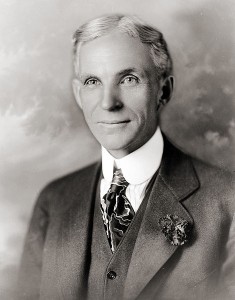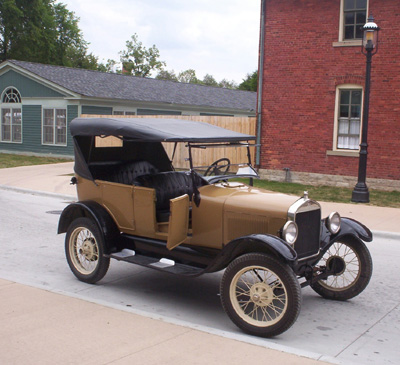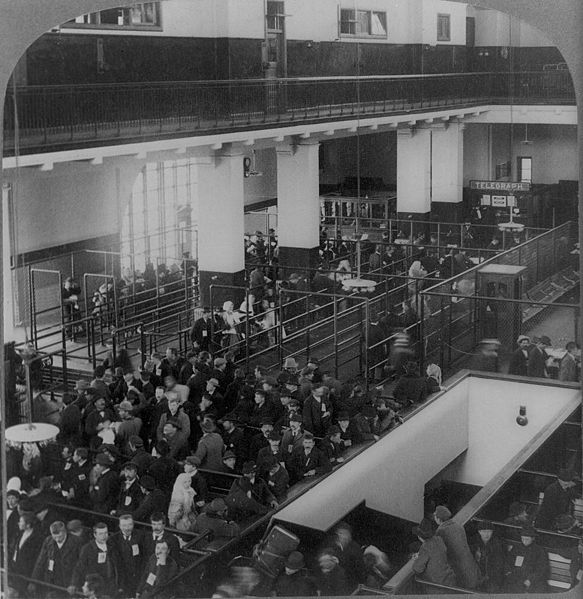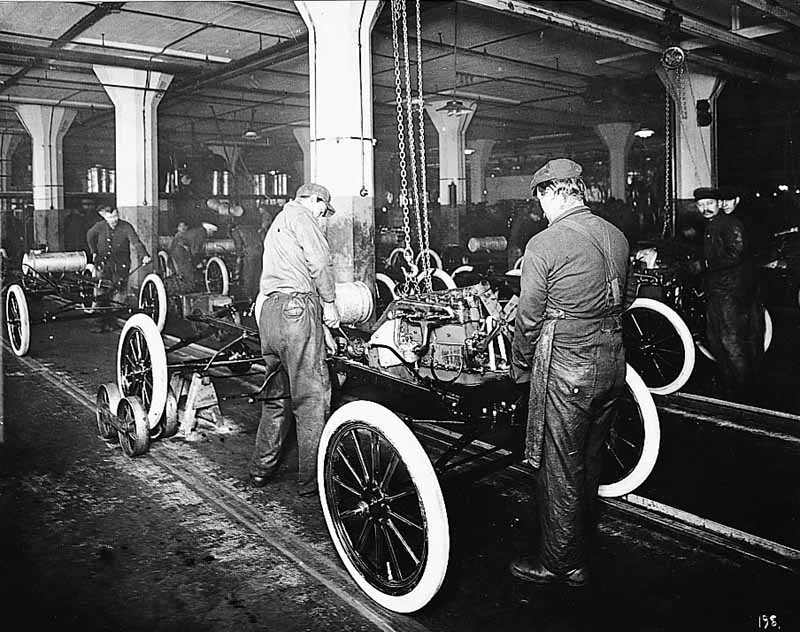Have Entrepreneurs Learned From Henry Ford’s $5 Day?
Have American Businesses Forgotten Lessons of the Past 100 Years?
 Decades ago, Henry Ford forever changed American work culture. In January 1914, he increased line worker wages from $2.34/day to $5/day and cut working time from 9 hours to a mere 8 hours per day.
Decades ago, Henry Ford forever changed American work culture. In January 1914, he increased line worker wages from $2.34/day to $5/day and cut working time from 9 hours to a mere 8 hours per day.
To give you some perspective, $5 then was equivalent to about $117 in 2013. Many American employees still enjoy 8 hour working days and HR departments all over the world owe their existence to Ford’s ideas on labor inputs.
This move was widely credited with helping shape American work ethics and create the American middle class. The pay increase and lowered work times not only allowed Ford’s pioneering Model T to be within the reach of the average American, it also gave them about just enough extra leisure time to want one.
However, egalitarianism and socialism were the furthest things from Ford’s mind – though he did occasionally pander to people who suggested as much for PR. What he was really after was the net increase in productivity those things got him. Besides that, those massive changes were mostly pushed by Henry Ford’s largely unknown business partner, James Couzens.
100 years ago, in 1913, employee turnover at an abysmal 370 percent. 81.3 percent of newly hired factory workers quit or were fired within a year.
Reasons for High Employee Turnover
4.) Ford himself kept wages low up until he was convinced otherwise.
3.) The work was extremely repetitive and boring.
2.) The practice at the time was to hire extremely abundant immigrant labor, most who barely understood the tech they were working with. Many barely even understood American culture to begin with.
1.) Management throughout the country believed that spending little for labor inputs was acceptable as there was a vast supply of replacement workers.
A huge proportion of line workers were immigrants who barely spoke English
These, in turn, created problems for the Ford Motor Co.
5.) Workers went AWOL all the time. Force, an accepted form of leverage at the time, simply did not work well enough.
4.) Even with extremely high tech equipment, there were process bottlenecks with new workers.
3.) The cost of breaking in green workers was starting to get unacceptable
2.) Word got around and it was getting progressively more difficult to hire more people.
1.) It became impossible to maximize the utility of tech inputs.
The pay raise and shorter workdays weren’t intended to create a middle class, nor was it intended to be a way to appease labor unions or anything like that. It was a way to keep workers so that they might eventually develop the aptitude and skills need to maximize the efficiency of the machines and processes the Ford Motor Co. developed. Not only did he pay fewer workers, he spent less per unit.
To quote Henry Ford himself:
“There was…no charity involved…. We wanted to pay these wages so that business would be on a lasting foundation. We were building for the future. A low wage business is always insecure. The payment of $5 a day for an eight-hour day was one of the finest cost-cutting moves we ever made.”
The results spoke for themselves:
6.) More skilled laborers moved to Detroit, then the site of Ford’s largest factories. This made hiring much easier, and allowed Ford to choose only the best.
5.) The best workers wanted to stay on, thanks to their “golden handcuffs”. They in turn, provided a source of guidance for new workers.
4.) Employee turnover fell from 370% in 1913 to 54% in 1914. Relatively high, reflecting the difficulty of the jobs, but much better than it was.
3.) Absenteeism dropped to negligible levels.
2.) It was a massive PR coup. Henry Ford had comparatively little trouble from labor unions in this period, and many Americans wanted him to run for president. Newspapers all over the world misreported the $5 pay increase as a gesture of goodwill – to Ford’s benefit.
1.) Employees were much more productive. Workers were now staying long enough to learn the ropes, and new processes were now much simpler to introduce. Training costs plummeted. In 5 years, Ford was creating a Model T every 24 seconds, where back in 1913, it was closer to one every 12 hours. Without the labor bottleneck hampering his advanced tech and processes, each Ford line worker was now 5 times more productive than his counterpart in other companies.
By the end of 1914, Ford’s 13,000 workers made 260,000 cars. Everyone else in the industry –with 66,000 workers— produced only 280,000 cars.
So what now?
Even with advanced equipment and high tech inputs, productivity ultimately rests on the workers at the bottom of the pyramid, and how well you treat them.
Surely, we’ve learned from Henry Ford’s example? Who today in their right mind would give extremely underpaid, and unmotivated workers, some with no familiarity to your own culture, access to technology they won’t ever maximize?
Perhaps you could look towards our current sources of cheap labor and answer that question yourself.
Sources and Additional Reading
Henry Ford’s $5-a-Day Revolution
Henry Ford and the Model T: A Case Study in Productivity
The Life of Henry Ford – The Henry Ford Museum
Henry Ford and The Rise of The U.S. Middle Class – economics.arawakcity.org
Henry Ford’s $5-a-Day Revolution – corporate.ford.com
Ford, My Life and Work Nevins and Hill, Ford TMC,
Railroading Economics: the Creation of the Free Market Mythology by Michael Perelman, Monthly Review Press
c 2006
Barnard, Harry. Independent Man: The Life of James Couzens, New York, Charles Scribner’s Sons, 1958. Republished by Detroit: Wayne State University Press, 2002. ISBN 0-8143-3085-1
U.S. Congress. Memorial Services Held in the House of Representatives of the United States, Together with Remarks Presented in Eulogy of James Couzens, Late a Senator from Michigan. 75th Cong., 1st sess., 1937. Washington, D.C.: Government Printing Office, 1938.
Image Credit
Late model Ford Model-T by Rmhermen via Wikimedia CC
All other images are part of the Public Domain
Disclaimer: PrintRunner is not affiliated or otherwise connected with companies mentioned in this post. Any opinions presented are solely their author’s and do not necessarily reflect PrintRunner’s.
Author Bio
 Arthur Piccio is one of PrintRunner Blog’s resident Admins. He is also the head writer for The Art of Small Business. His work has been featured on New York Times’ You’re The Boss Small Business Blog, Bizsugar, SmallBiz Trends, and other small business and printing-oriented online publications.
Arthur Piccio is one of PrintRunner Blog’s resident Admins. He is also the head writer for The Art of Small Business. His work has been featured on New York Times’ You’re The Boss Small Business Blog, Bizsugar, SmallBiz Trends, and other small business and printing-oriented online publications.







